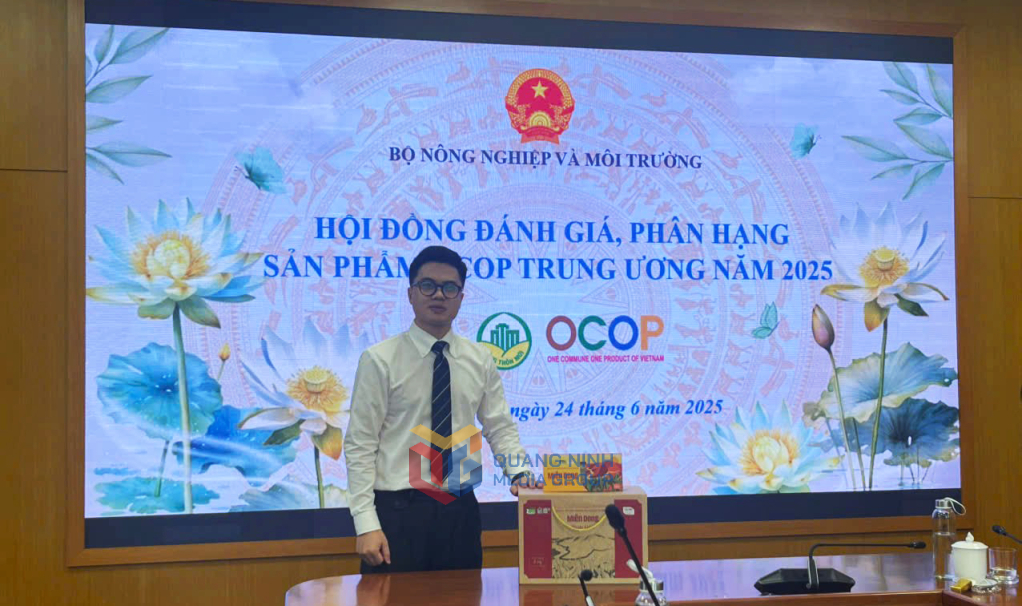Quang Ninh: 03 more OCOP products meet 5-star national standards
On June 24, the Central Evaluation and Classification Council for OCOP (One Commune One Product) held a national-level conference to assess and rank OCOP products for the first round of 2025. Three additional products made in Quang Ninh recognized with the prestigious 5-star national rating, bringing its total number of 5-star OCOP products to eight.
This round saw 82 product applications submitted by 20 provinces and cities across the country, categorized into four groups: 62 in the food category; 14 in handicrafts; 5 in medicinal herbs and herbal-derived products; and 1 in community-based tourism services and tourist destinations. Among them, 8 provinces and cities were from the northern region and 12 from the south.
Quang Ninh submitted four products for this evaluation, including three handicraft items produced by Quang Vinh Ceramic Company and one food item made by Binh Lieu Trading and Service Joint Stock Company.
Following a rigorous and objective assessment, the national OCOP council approved 47 out of 82 entries for the 5-star ranking. Of these, three of Quang Ninh’s four entries received the highest recognition: the fortune-attracting vase, the four seasons flow-glaze vase set, and Binh Lieu vermicelli.

Previously, in the third round of the 2024 national OCOP evaluations, Ba Che Yellow Camellia Tea produced by Dap Thanh Forestry Trading Joint Stock Company was also awarded the 5-star national OCOP status. Alongside earlier products, such as Ha Long pearls and Quy Hoa Yellow Camellia Tea, Quang Ninh now has a total of eight 5-star OCOP products recognized at the national level.
Quang Ninh’s OCOP products have gained strong consumer confidence and market recognition. The OCOP program has become a key economic driver for the province, unlocking local traditional product potential, building value chains, and promoting flagship products both domestically and internationally.
Quang Ninh is turning OCOP into a strong provincial brand while opening new directions in rural economic development and livelihood transformation.






